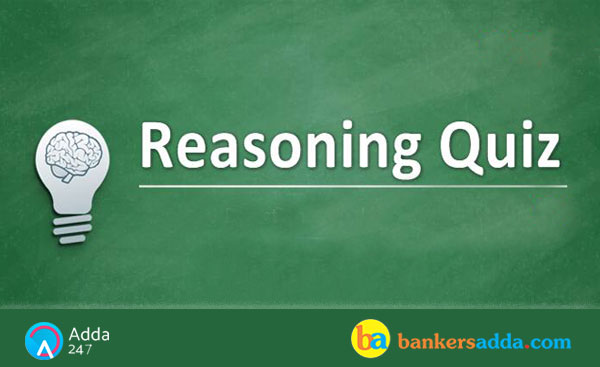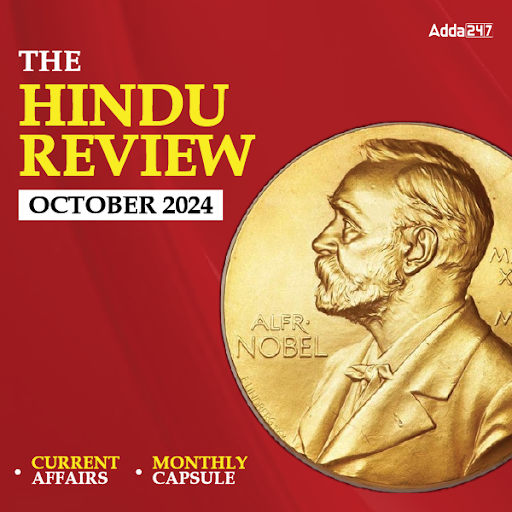
Directions (1-5): Study the given information and answer the questions:
A, B, C, D, E, F and G are sitting in a straight line facing north. Each one of them studies in different class i.e. 2nd, 6th, 4th, 12th, 10th, 8th and 9th. They like different colors i.e. Blue, White, Red, Violet, Yellow, Black and Green but not necessarily in same order.
B sits fourth to the left of the person who studies in 6th class. Either B or the person who studies in 6th class sits at the extreme ends of the line. The one who likes Red sits at extreme end and is immediate neighbor of A. Only one person sits between B and G who likes Black. G studies in on the 9th class. The person who studies in 8th class sits third to right of D. D is not an immediate neighbour of G. Only one person sits between E and the person who studies in 12nd class. F likes green and sits immediate left of the one who likes Yellow. D does not like White. A and C are immediate neighbours of each other. A does not study in 6th class. One who studies in 4th class sits third to right of the one who studies in 10th class. There are two people sit between the one who likes Yellow and the one who likes Violet.
Q1. In which of the following class D studies?
Q2. Who amongst the following studies in 10th class?
Q3. How many students sit left to the one who likes Yellow?
Q4. In which of the following class C studies?
Q5. How many students sit between the one who studies in 8th class and the one who likes Black?
Directions (6-10): In these questions, relationship between different elements is shown in the statements. These statements are followed by two conclusions.
Mark answer as
Q6. Statements: A<C>
Q7. Statements: M>B, H ≥ M < F < A = Q
Conclusions:
I. B < A
II. B < H
Q8. Statements: A > Q > M > R= S, Q=Z>N
Conclusions:
I. N < R
II. N ≥ R
Q9. Statements: P < B > Q, X < B ≥ A
I. P > X
II. A ≤ P
Q10. Statements: A ≥ J < Y = Z > M > R
Conclusions:
I. A > Y
II. R < Y
Directions (11-12): Each question given below consists of a statement, followed by two arguments numbered I and II. You have to decide which of the arguments is a ‘strong’ argument and which is a ‘weak’ argument. Give answer:
Q11. Statement: Should system of offering jobs only to the wards of government employees be introduced in all government offices in India?
Arguments:
I. No. It denies opportunity to many deserving individuals and government may stand to lose in the long run.
II. No. It is against the principle of equality. Does not government not owe its responsibility to all its citizens?
Merit, fair selectin and equal opportunities for all these three factors, if taken care of, can help government recruit competent officials and also fulfil the objectives of the Constitution. Thus, both the arguments hold strong.
Q12. Statement: Is paying ransom or agreeing to the conditions of kidnappers of political figures, a proper course of action?
Arguments:
I. Yes. The victims must be saved at all cost.
II. No. It encourages the kidnappers to continue their sinister activities.
Only argument II follows. The conditions should not be agreed to, as they encourage the sinister activities of the kidnappers.
Directions (13-15): In each question below is given a statement followed by three assumptions numbered I, II and III. You have to consider the statement and the following assumptions, decide which of the assumption is followed and choose your answer accordingly.
Q13. Statement: Use ‘X’ brand shoes. These are durable and available in all sizes-An advertisement in the newspaper A.
Assumptions:
I. Normally people like durable shoes.
II. Very few people read advertisement in a newspaper.
III. Very few people read the newspaper A.
Any advertisement highlights only the desirable qualities of the product. So, I is implicit. The ‘X’ brand has advertised its product in newspaper A. This implies that a large section of people reads advertisements in newspapers and that news-paper A too has a side circulation. So, neither II nor III is implicit.
Q14. Statement: These apples are too cheap to be good.
Assumptions:
I. When the apple crop is abundant, the prices go down.
II. The lower the selling price, the inferior is the quality of the commodity.
III. Very cheap apples are also good.
It is mentioned that the apples are so cheap that they cannot be good. This means that the prices of good apples are never too low and that very cheap apples are never good. So, neither I nor III is implicit. Assumption II clearly follows from the statement that apples are of inferior quality because they are cheap. So, it is implicit.
Q15. Statement: The employees’ association has appealed to the Managers of Company Z to introduce written examinations for clerical cadre recruitment to prevent selection of incompetent persons.
Assumptions:
I. So far the Company Z used to select candidates without conducting a written examination.
II. A written examination can help to identify competent persons.
III. At higher level, written examination may not be of much use.





 The Hindu Review October 2022: Download ...
The Hindu Review October 2022: Download ...
 IBPS PO Vacancies Increased Upto 5973
IBPS PO Vacancies Increased Upto 5973
 23rd November 2024 Current Affairs (Dail...
23rd November 2024 Current Affairs (Dail...




